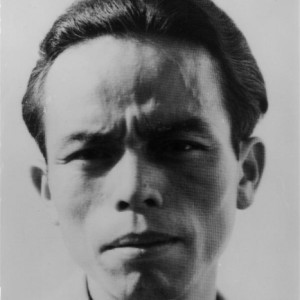(1908-2000)
Vu Cao Dam was born in 1908 in Hanoi, North Vietnam. At the age of eighteen he began his studies at the Ecole des Beaux Arts in Hanoi. In 1931, when he was twenty-three, he was awarded a scholarship for travel and study in Paris, and that city became his home until 1949, when he left for the south of France.
The Mediterranean regions have long drawn painters, many of whom spend at least part of the year there. Vu Cao Dam felt so completely under the spell of the beauty and light of the area that he made it his permanent home.
All the subtle charm of Parisian life and all the stimulus of its vigorous artistic movements had their inevitable influence on him and his painting, yet he never turned away from his Oriental heritage. Vu Cao Dam succeeded in taking something from both cultures and producing an amalgam of the best in Oriental and Occidental art.
In particular the subtle simplicity, the style and the color of the Primitives made a strong impression on Vu Cao Dam. But much as he admired them, he did not accept their technique. He dreamed of trying to regenerate Indo-Chinese painting and believed conserving the qualities of the past and adding to them certain characteristics of Occidental painting could do it. He felt such a synthesis was possible, and in his own paintings one can see that he attained a balance between the two types of art whose results seem entirely natural.
With the exception of some landscapes, Vu Cao Dam concentrated his talent to figure painting. The women and young girls of his native country and its folklore and poems were his favorite subjects. Sometimes the women have babies in their arms, sometimes they carry a bouquet or play a musical instrument, and sometimes they lead a horse by its bridle.
Whatever their occupation, the black hair and eyes of these lovely women are all the more striking because they are the only dark accents in a total composition of fresh and ravishing colors in which blue and a variety of other delicate tones of the palette dominate. All the nuances of color – rose, lilac, yellow, gradations of white – are marvelously blended, so that these paintings, in which the forms are clearly drawn by the strokes of a fine, sensitive brush, resemble bouquets of rare flowers. The women Vu Cao Dam painted seem to be symbols of the enduring beauty of womanhood and motherhood. Substituting the brush for the pen, he produced poems in color. Vu Cao Dam exhibited at the Salon des Independants, the Salon des Tuileries, and the Salon d’Automne. He was a member of the latter Salon since 1943. He had many exhibitions in Paris and in the south of France. His paintings have been added to the permanent collections of the Museums of Algiers, Beziers, the Musee de la France d’Outre Mer, and the Musee d’Art in Paris.

